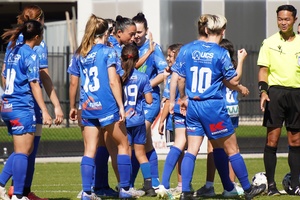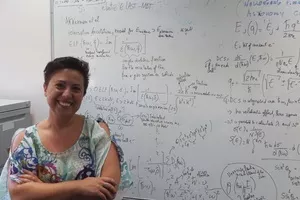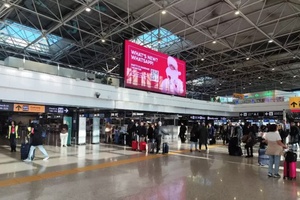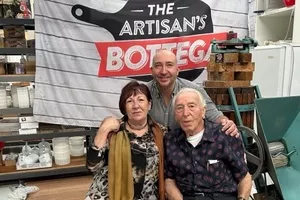What will we eat in 30 years’ time? Will your favourite fruit still be available? Will people still be able to grow vegetables in the backyard? Will pasta continue as a staple of Italian cuisine given the impact of changing weather patterns and the geo-political landscape on sourcing good wheat?
What might constitute an eating experience?
Will we find ourselves like Violet Beauregarde in Charlie and the Chocolate Factory? You may recall she chews on a single chewing gum-like Gobstopper to experience a full three course meal made up of tomato soup, roast beef and blueberry pie and ice-cream for dessert.
Futurologists have been deep in thought about how the world will function as we move forward at a rapid pace towards an unknown global future. Whilst there are many questions, it is clear humanity faces considerable challenges to the ways we currently subsist.
With the world’s population projected to reach 10 billion by 2049, access to fertile land, clean water, erratic weather patterns, and waste dumping, amongst other issues, will certainly impact traditional food sources.
Politicians, agri-businesses, farmers and even home gardeners have been deep in thought about how we might plan for a sustainable future and human nutrition.
Future focussed arts practice provides a way for creatives to express their reactions to the future of food, and the issues around food and nutrition. Gloop: Exploring Urban Food Systems in 2049 (Part 1) is one such response. This exhibition was organised by creative futurologists Anna Reeves and Ace Salama (Futureology) in collaboration with Swinburne University School of Design and Architecture and supporting partner BETA by STH BNK as part of Melbourne Design Week.
This experiential exhibition was set up so that the visitor enters the imagined Gloop Factory in 2049. The scenario: the world has warmed 1.5 degrees above pre-industrial levels and global food systems are struggling to keep up with demand. However, Gloop Corporation has created AI-enhanced, eco-friendly food products that draw on brain-altering technology to taste delicious and flavourful, instead of what your eyes see – sludgy gloop.
The exhibition provided an artistic response to the question of what food forms might be found soon? This question leads, of course, to wonder how these might be experienced. Will we taste, smell, touch food items such as herbs, grains, fruits?
The Gloop factory centred around an imposing sculpture which provided a sample of the gloopy food. Whilst visually unappealing, it was actually delicious. Of course! It was the result of the creative gastronomic work of Cordon Bleu Chef Gigi Pozzoli (dear reader, you may recall the article on Chef Gigi’s Gelateria). Gigi drew on his creative talents to re-imagine gloop with a delicious fresh tomato taste.
Luckily for the audience, Gigi also provided the pasta al pesto feast (all part of the interactive exhibition). The pasta was smuggled into the Gloop factory by a gang of food rebels who infiltrated the premises in protest. Real food vs Gloop.
Anna Reeves, of Futureology, explains that the exhibition manifested a “thought-provoking glimpse into the future of food, providing visitors with a unique and immersive experience that challenges conventional thinking and raises questions about sustainability and our relationship with food.”
Whilst the visual may be captivating, in 2049, pasta is a rarity on the menu. Wheat, water, transport limitations (which contribute to the choking environment) and other factors mean that pasta is scarce.
Swinburne University student Adrian Pace, a third generation Italian, conceived a pasta called Memoruccine, translated as “little memories”. The idea of a wholesome piatto di pasta asciutta becoming a luxury item sends chills down your spine. How can pasta survive and evolve as a culinary generational treasure but disappear in one lifetime?
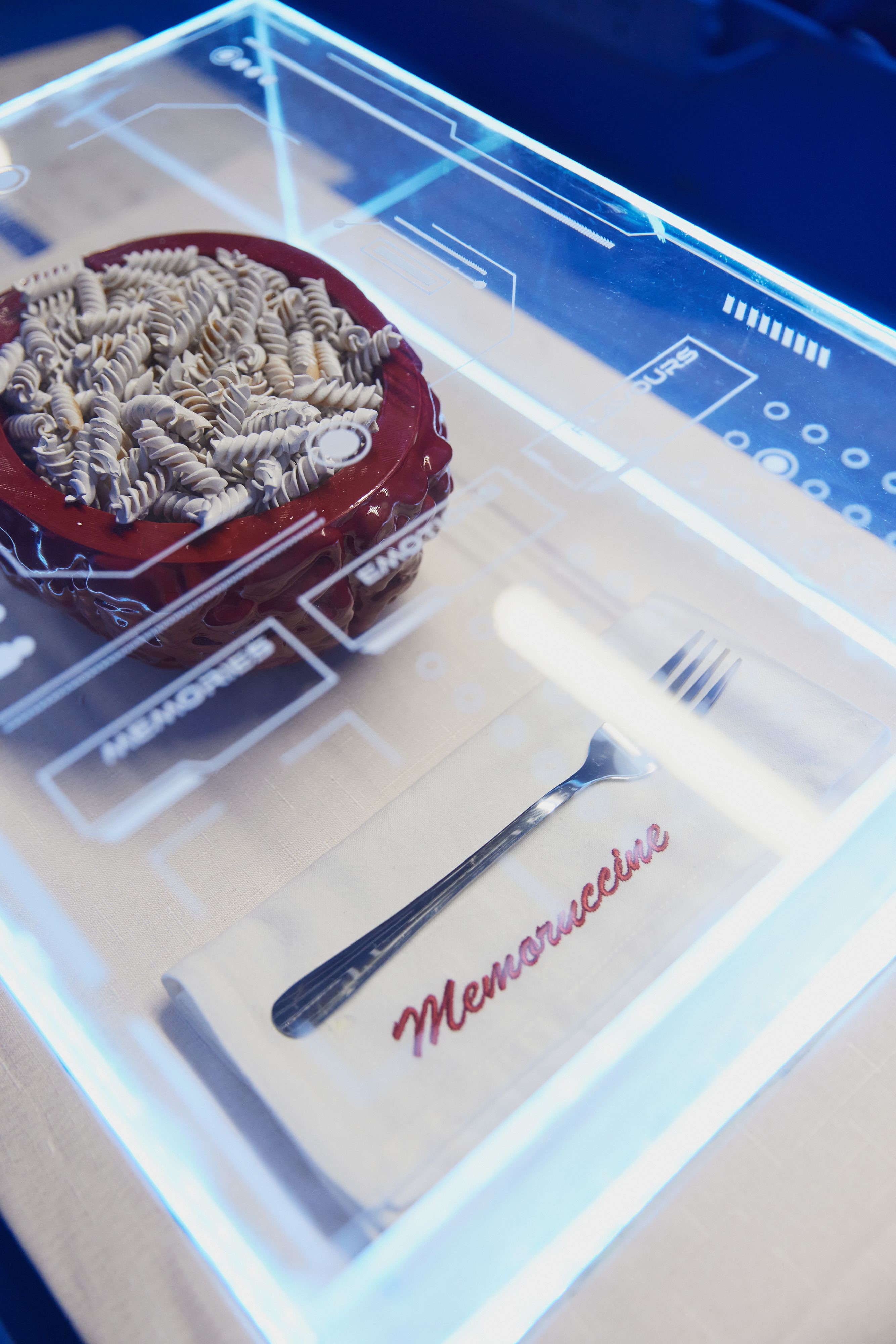
A potentially luxurious plate of Memoruccine
The idea of alternate food systems was not new to Anna and her creative partner Ace Salama. They have been contemplating the idea for some time, delving further into the future after their successful Metaverse exhibition in 2022. The pandemic lock down period provided the space to reflect and trial some conceptualisations. Anna explains “we are real foodies and like many, we used the lockdown period to try various forms of urban gardening including hydroponic and balcony gardening. That period provided the opportunity to start the creative process to do a deep dive into alternate futures, alternate food systems.”
Anna grew up with an abundant vegetable garden and loved the process of planting, tending, and harvesting. She knows of the difficulty in obtaining heirloom tomatoes, various seeds and varieties which seem to have disappeared in favour of “genetically modified (GM) products. These are designed to make plants more resistant to failure, so we have already started on our modification journey.”
Anna chuckles as she explains that she has not inherited culinary skills from her Italian ancestors. She is linked to Count Rosignoli on her mother’s side. (This Conte was exiled from Italy to the Orkney Isles and so began another bloodline – but that’s another story for another time).
In the meantime, the questions remain. Will AI replicate the experience of food, such as the unforgettable aroma of freshly picked basil as we place it onto mozzarella? Will mozzarella be available given pastureland may not be readily available?
How will we come together for a dining experience? Given that food is central to how people come together to socialise, celebrate, do business, even grieve, what will replace this experience in terms of offering human connection?
Things are changing at a rapid pace. When we had the Metaverse store last year there was hardly any talk in the community about artificial intelligence (AI), now everyone knows about Chat GPT. As climate change impacts the growth and supply of certain food products, as fresh water becomes an increasingly valuable resource, and as geo-political challenges continue – the future of food is an important question for all.
For now, AI is limited to the possibility of generating text for food advertisements, as the infamous Pepperoni Hug Spot commercial has demonstrated (if you haven’t seen it, brace yourself when you google).
Missed the first exhibition? Gloop: Exploring Urban Food Systems in 2049 (Part 2) may provide some further insights. The follow up event will take place from 27-30 July at Hanover House, 158 City Road, Southbank in Melbourne.
The objective of GloopAI Part 1 and Part 2 is to provide an immersive experience that challenges visitors to break away from conventional thinking about a particular triad: food, AI and our relationship with food. From the experience of Part 1 of the exhibition, it certainly achieved its aim. Let’s hope we never have to deal with a world in which our current food is labelled under memoruccine.


















